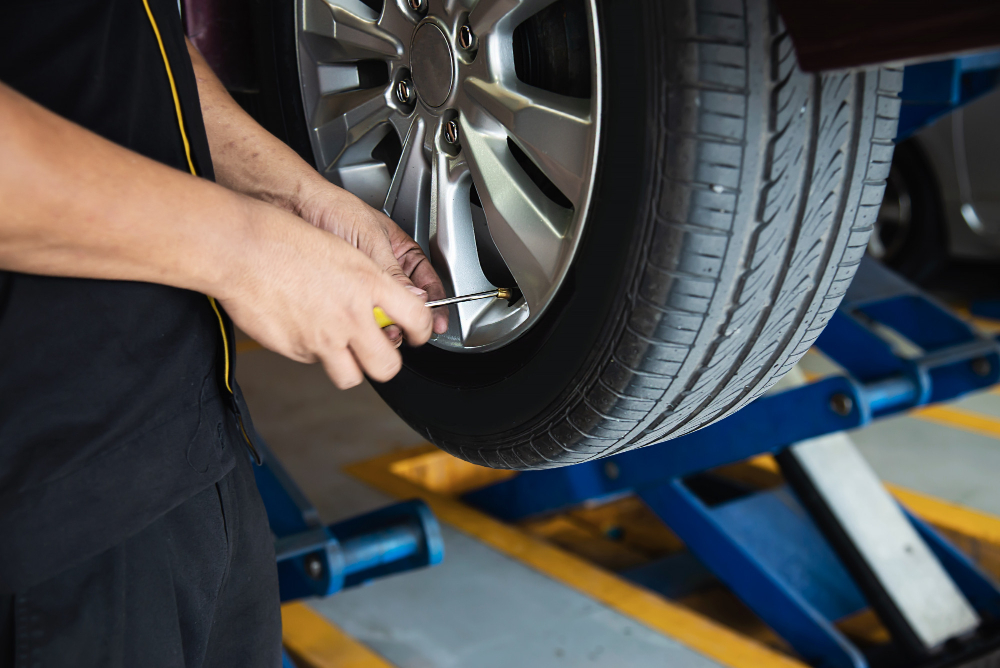How can you tell if your car's tires are ready for driving in the rain?

(Photo Credit: freepik)
Before driving in the rain, you should check the condition of your tires to ensure they are ready. Rain makes the road slippery, increasing the risk of accidents. Therefore, the performance of your tires is crucial.
Driving in rainy weather makes the road slippery and more difficult to control, so extra caution is needed to prevent accidents. Therefore, you should thoroughly check the condition of your car's tires before driving in the rain, as tires play a crucial role in maintaining traction on the road.
How to Check Your Car's Tire Condition:
Tire Age
Most tires have a lifespan of about 4-5 years (from when they are first used) or 50,000 to 80,000 kilometers. However, if the car isn't driven frequently, the tires may last longer. For peace of mind, it's best to have the tires checked at a service center, especially for vehicles that aren't driven often. When a car is parked for long periods, it’s hard to predict if the tires have developed any damage or wear.
Tread Depth
Tread depth is crucial for road grip and water dispersion from the tire surface. The tread should be no less than 2 millimeters deep, with new tires typically having a depth of 6-8 millimeters. If the tread depth is significantly reduced, the tires should be replaced immediately for safety.
Tire Pressure
Check tire pressure at least once a month. During the rainy season, it is recommended to inflate the tires 2-3 pounds above the normal pressure for better road grip. Under-inflated tires can reduce traction and increase the risk of hydroplaning.
Tire Rotation
- It’s advisable to rotate your tires every 10,000 kilometers, swapping the front and rear tires. This helps ensure even wear and extends the lifespan of your tires.
How to Drive Safely in the Rain:
- Drive at speeds no higher than 60 km/h to maintain better control of your vehicle.
- Turn on your headlights to improve visibility.
- Maintain a distance of about 10-15 meters from the vehicle in front of you.
- Avoid driving through puddles or deep water and reduce speed when necessary.
- Use a lower gear for better control.
- Adjust your windshield wipers to match the rainfall intensity.
Once you have thoroughly checked the condition of your tires, you are ready to drive in the rain. Remember to regularly check your tires or do so at recommended intervals for safe driving. If the tires are worn or deteriorated, they should be replaced to ensure optimal performance.
Claim your free car valuation today!
Read More: Car air fresheners make the air conditioning system clogged!
Looking for a car appraisal? You can contact us for a free car valuation within 24 hours…
